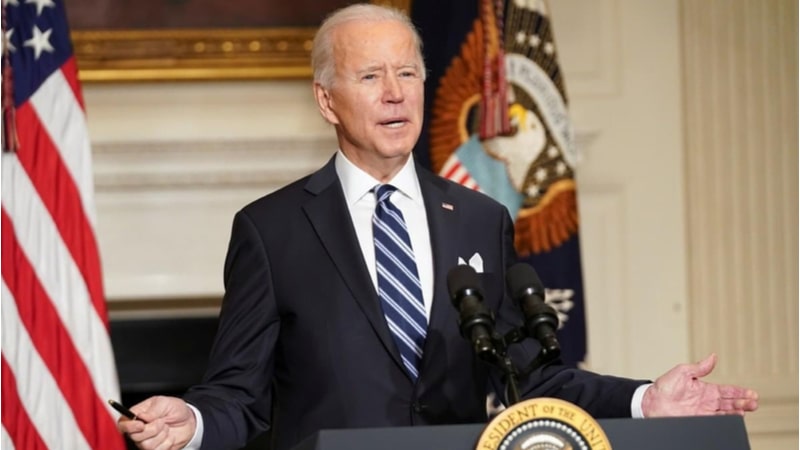MeriTalk Insight: Biden Budget Offers Early Blueprint … With CR in the Forecast

President Biden on April 9 released a massive $1.52 trillion fiscal year 2022 spending plan that reflects his vision of an expanded – and expansive – Federal government that boosts spending for domestic programs and addresses issues such as education, affordable housing, public health, racial inequality, and climate change, among many others.
In the big picture, non-defense spending would rise next year to $769.4 billion, an increase of nearly 16 percent, while spending on defense would increase 1.7 percent to $753 billion. The latter is considerably less than Republicans have called for, but is more than would have been desired by progressive Democrats who pushed for a flat Pentagon budget, or even spending cuts.
Skinny on Details
The preliminary plan has been dubbed a “skinny budget” for a couple of reasons. While it indicates this administration’s priorities, it doesn’t do so in detail, and it covers only the discretionary portion of total Federal spending.
It will be followed later this Spring (timing details unclear at this time) by a full budget proposal that includes mandatory spending programs such as Social Security, Medicare, and interest on the national debt, etc. These latter programs comprise roughly two-thirds of total government expenditures. Missing too are all the appendices that would detail tax increases and the impact over the next decade on deficits, debt, and the nation’s economy.
Also missing is the Analytical Perspectives volume which is where one would normally find a Biden-Harris Presidential Management Agenda (PMA) chapter. The elements of a PMA are hinted at – more about that in a future column. But for those in the “good government” community, as well as government contractors who seek to see what may stay or go in areas like human resources, information technology (IT), financial management, acquisition, and the like, the suspense only grows.
MeriTalk and others have produced detailed coverage of the IT, innovation, and cybersecurity elements of the President’s skinny budget request.
Also worth noting are proposed increases for science, technology, and research at the National Institute of Standards and Technology, the National Institutes of Health, supply chain security for IT and 5G, the National Science Foundation, rural broadband at USDA, the National Telecommunications Administration at Commerce, NASA, and SBA’s Small Business Innovation Research and Technology Transfer programs. Thus, there is joy and celebration in the Federal IT and professional services community! But let’s keep the champagne on ice for a little bit longer.
Curb Your Enthusiasm
I will leave it to the national media political pundits to debate “big picture” concerns that have already surfaced with the budget proposal, but some are plain to see.
Count among those the immediate starkly negative reaction from GOP legislators, bipartisan concern about flat Defense spending amidst growing concern about Russia and China, Republicans’ reincarnated worry about the Federal deficit, progressives’ push for even more investments in civilian agencies, and deeper cuts at DoD, and the very thin margins Democrats hold in both the House and Senate. And on the process front, exactly how many times will Congress be allowed to go to the “reconciliation well” and avoid needing 60 votes for passage?
Here are some of my concerns as OBG – the Old Budget Guy (aka while in government “The Abominable No Man”).
Time Keeps on Slipping
The major concern I have immediately is that we are way behind in the long path to a Federal budget. While budget laws contain formal deadlines, the process follows a loose calendar where slippage and overlap frequently occur. This year, the slippage is greater than usual.
A President normally submits his/her budget proposal to Congress in February. In March and April, Congress hashes out a budget resolution that provides specific guidance to both authorization and appropriations committees so they can spend the summer months holding hearings, reviewing the details of the administration’s requests, and crafting separate bills to fund the government for the next fiscal year that begins October 1.
Now of course the last time anything worked like this was in the late 1990s when Bill Clinton was President. That was the last time Congress passed and the President signed appropriations bills that funded the entire government, and that we didn’t enter the new fiscal year under a full or partial continuing resolution (CR).
Any new President is late in submitting the first budget. But President Biden is even later with the dispute over the election results, the delay by the GSA Administrator in issuing a letter of ascertainment giving the presidential transition team access to resources and information, and the refusal by the former OMB Director to assist the Biden-Harris team in getting a start on developing an FY 2022 budget. Where is that Trump-Pence FY 2022 budget document anyways? That should be a real collectors’ item!
Bottom Line – Hello CR
So what are the chances that we start the new fiscal year in October with an approved budget? To quote my budget predecessor at Commerce: “Slim and none. And Slim just left town.” My advice: start planning today for a CR later this year.
And looking forward to President Biden’s FY 2023 budget request, which will come as we approach the 2022 congressional elections, what might be the budget atmosphere? I’ll say now, quoting again, “Worse than last year, but not as bad as next year.”
